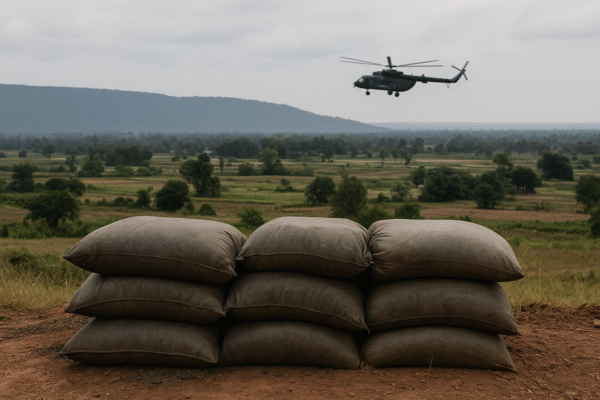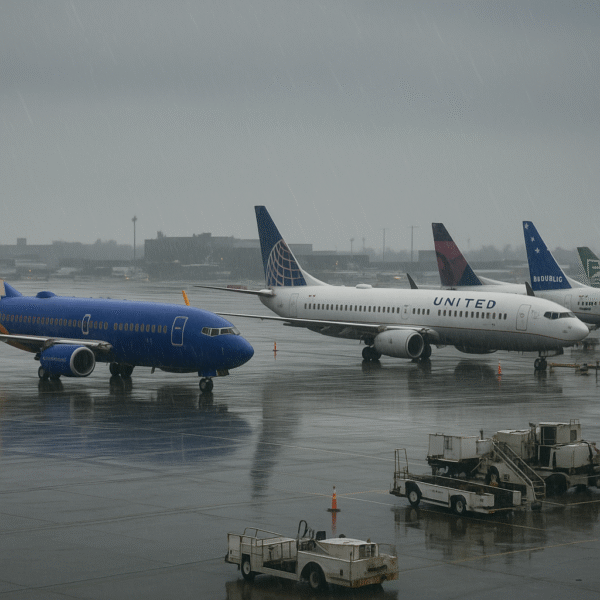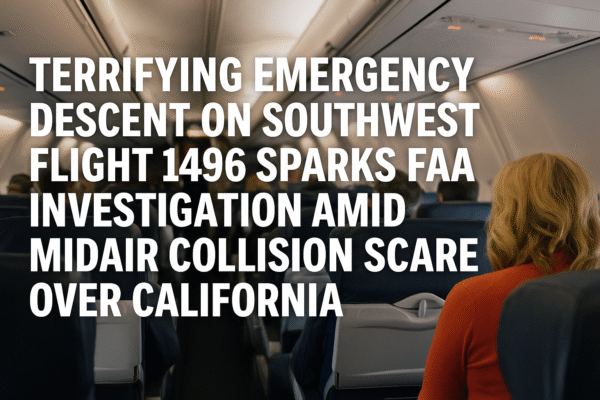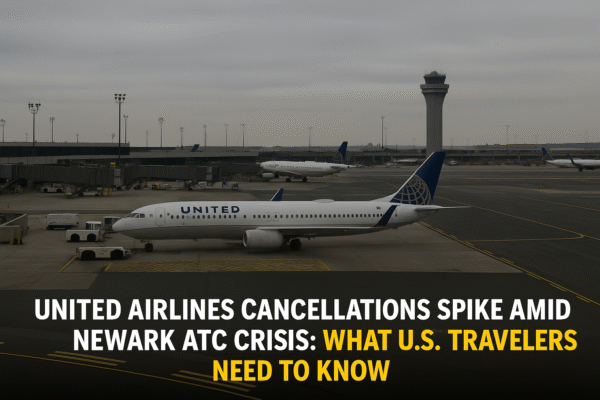Passengers on board Southwest Airlines Flight 1496 experienced a harrowing ordeal on a routine trip from Burbank, California to Las Vegas, Nevada when the aircraft was forced to make an emergency descent following a midair collision warning. The sudden maneuver, triggered by proximity alerts, left passengers fearing the worst and injured two crew members. The incident has sparked a formal investigation by the Federal Aviation Administration (FAA) into possible air traffic communication lapses and safety system failures.
Sudden Emergency Over Southern California Skies
Flight 1496 departed Hollywood Burbank Airport around 11:00 a.m. on what was expected to be a short, uneventful flight. Just 10 minutes into the journey, chaos erupted in the cabin when the aircraft sharply dropped altitude in response to an onboard traffic collision avoidance system (TCAS) alert. Passengers described the descent as a jarring plunge that caused unbuckled passengers to strike the cabin ceiling and left many in tears and shock.
Several travelers reported injuries ranging from bruises to anxiety attacks, while two flight attendants were more seriously affected. One crew member reportedly hit her head during the rapid descent and required immediate medical attention upon landing. According to passenger accounts, the panic was amplified by the lack of immediate clarity about what had gone wrong.
Crew’s Split-Second Response Averts Tragedy
Southwest Airlines later confirmed that the cockpit crew received two traffic alerts warning of a nearby aircraft that posed a potential collision threat. In compliance with safety protocols, the pilots initiated a steep descent and rapid course adjustment to avoid the unidentified aircraft. The collision was ultimately averted, and the plane stabilized its flight path en route to Harry Reid International Airport in Las Vegas.
The flight landed safely with emergency crews on standby, but many onboard remained visibly shaken. Southwest Airlines commended the crew’s quick thinking and professionalism, emphasizing that the pilot’s adherence to emergency procedures likely prevented a catastrophic incident.
FAA Launches Investigation Into Air Traffic Control Lapse
The FAA has opened a formal inquiry into the incident, focusing on why Southwest Flight 1496 came dangerously close to another aircraft in controlled airspace. Preliminary findings suggest that the flight temporarily lost radio communication with the Los Angeles Air Route Traffic Control Center (ARTCC), a critical hub responsible for coordinating aircraft across Southern California airspace.
Such communication lapses are rare but can be deadly. According to FAA safety protocols, aircraft flying without active guidance from air traffic controllers must rely entirely on onboard safety systems to avoid other planes—a situation that played out during Flight 1496’s midair scare.
Officials are now examining whether staffing shortages, technical issues, or procedural missteps may have contributed to the near miss. The FAA has pledged a full review and will work closely with Southwest Airlines to ensure that all flight data, including cockpit voice recordings and radar logs, are thoroughly analyzed.
Air Travel Safety Under Scrutiny
This incident comes as the U.S. aviation industry grapples with increasing pressure to address gaps in air traffic infrastructure. Staffing shortages, aging technology, and rising flight volumes have combined to create vulnerability in the national airspace system. In 2023, the U.S. Government Accountability Office (GAO) flagged over 300 near misses nationwide, many of which were attributed to human error or outdated radar systems.
Southwest’s midair scare echoes recent calls by aviation unions and safety watchdogs for better funding of the FAA’s modernization efforts. The National Air Traffic Controllers Association (NATCA) has long advocated for improved controller training, updated communication systems, and AI-enhanced monitoring tools to help prevent future incidents.
Passenger Experiences Highlight Emotional Toll
Passengers aboard Flight 1496 reported intense fear, confusion, and lingering trauma after the ordeal. One traveler shared that the descent felt like “being on a crashing elevator with no idea what was coming next.” Despite reassurances from the cockpit after the plane regained stability, the emotional aftermath left some passengers visibly shaken upon arrival in Las Vegas.
Southwest Airlines has offered apologies and promised full cooperation with federal investigators. A spokesperson stated that passenger safety remains the carrier’s top priority and that the airline is reviewing its internal protocols to ensure continued compliance with national safety standards.
Importance of Safety Systems and Real-Time Communication
Flight 1496’s brush with disaster serves as a sobering reminder of how quickly a routine flight can descend into a crisis. While the aircraft’s TCAS system functioned correctly, averting a midair collision, the communication lapse with air traffic control remains concerning. The FAA’s ongoing investigation will likely prompt renewed focus on reinforcing real-time communication protocols and modernizing air traffic control infrastructure across the country.
Experts in aviation safety stress that while commercial aviation remains one of the safest modes of travel, continuous investment in surveillance technology, automation, and human resource training is essential to prevent avoidable incidents.
Conclusion: Lessons from the Sky
The emergency descent on Southwest Airlines Flight 1496 is more than an isolated incident—it’s a wake-up call for regulators, airlines, and the flying public. As air travel rebounds and skies grow busier, ensuring safe distances between aircraft and clear lines of communication must be a top priority.
Thanks to the quick-thinking crew and effective safety systems, a catastrophe was avoided. But the emotional scars for passengers and the scrutiny now facing air traffic management authorities point to a pressing need for systemic improvements. The FAA’s findings in the coming weeks will help determine the future course of action to strengthen U.S. aviation safety and restore confidence in one of the world’s most trusted transport systems.
For more travel news like this, keep reading Global Travel Wire


















